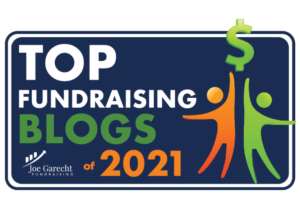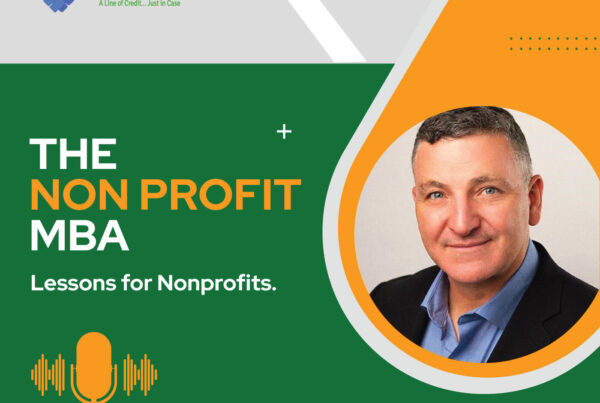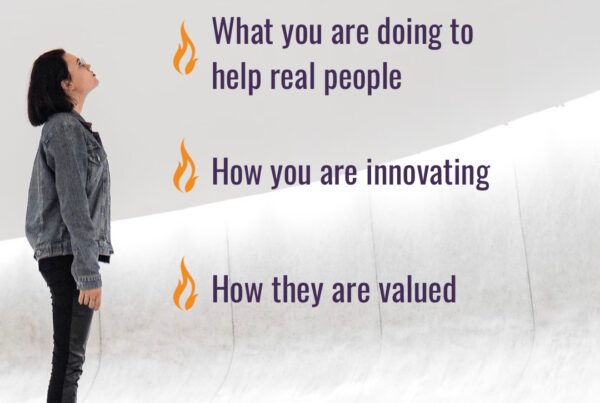I received a few emotional responses to last week’s blog post. Executive Directors with tiny staffs felt as though I may not understand that their plates are full and they barely have time to get daily tasks accomplished, to keep programs running, and vendors handled.
I, too, have been both a CEO and a development director for small nonprofits. I’ve found the work energizing, overwhelming, and never dull.
What I learned, as Reynold Levy tells us in Yours for the Asking, is that when a fundraising program is really humming, it resembles a ladder and the seasons of life.
“It resembles a ladder, because ideally individual and institutional sources find donations habit forming and their relationship to your organization or cause strengthens over time.”
Levy uses an example from Kenneth N. Dayton, the former chairman and chief executive of Dayton Hudson Corporation. Dayton describes the stages of giving for himself and his wife this way (p. 18):
1. Minimal response
2. Involvement and interest
3. As much as possible
4. Maximum allowable
5. Beyond the max
6. Percentage of wealth
7. Capping wealth
8. Reducing the cap
9. Bequests
Here’s the thing: These stages are only likely to occur for a donor if someone in the organization has made it their focus to maintain meaningful relationships with key supporters.
That is not to say the executive director must do all the donor tending. An engaged board, key community volunteers who may also be financial supporters, and of course staff, can all play a role in the efforts. The executive director sets the tone by their own actions and focus on individuals.
An example of a gifted fundraising executive director is Clint, a man who is the President of a large social-service organization. He has a development staff of only one, between 400-500 other employees, and an organization that delivers more than 25 different programs throughout his community.
I’ve watched Clint and his tiny but mighty development staff work to engage more people to assist them in keeping key donors connected both with their time and their dollars. Eight or so years ago the organization had maybe 30 or 40 people who gave major gifts. Now they are just shy of 400. These are people who make gifts of $5000, $10,000, and even $50,000 or more each year. Clint knows each and every one of those people by name and sight.
He’s told me, “I plan on 45 minutes when I run to the store to pick up milk. There are just too many people to say hello to and thank.”
Clint has made it a policy to personally phone or send handwritten notes to anyone who makes a gift of $500 or more. He does it the minute he learns of the gift and then is done with it, so it’s not something waiting on his to do list.
What Clint has created is an environment of caring and really “seeing” the people who love the work of his organization. Does this take him time? Yes. Does he have to make choices to not do other equally important tasks? Absolutely.
When I asked him why, he said to me recently:
“I learned a long time ago, I have to be less of a lone-ranger and more of a recruiter. My job is to keep identifying people who have a passion for our work and then regularly keep them engaged and feeling special.”
Clint’s organization has hundreds of financial supporters at all the stages of giving outlined above. People give more and for long periods of time because they know for certain their gifts matter to both Clint and to the organization.
If your organization has any individuals who have given you their time or their money for more than a year, do you know them by sight? By name? Do you schedule regular times throughout the year when you can meet with a handful at a time or one-on-one?
I invite you to reach out to someone today who is a supporter. Surprise them with your call and attention. Share a short example or story with them of how your organization has changed someone’s life this past week. And then listen. Really listen.







Dear Lori,
Thanks for the tips on how to engage supporters!
I would add, help everyone in your office be a fundraiser. Help the donors get to know who works with you, and who they can participate in helping to thank. This way, the burden is less on the director of development, and more shared over the whole agency.
If we can all become fundraisers for our organizations and help donors continue to feel connected and special, we can all help sustain them during these difficult times.
Sincerely,
Mazarine
Mazarine,
I love your concept of us ALL being fundraisers so that the burden isn’t just on the development staff. This can be done simply by board members, other staff and volunteers…being open and welcoming when we meet people who are at our events, our clients and even vendors.
Thanks for your post!
Lori